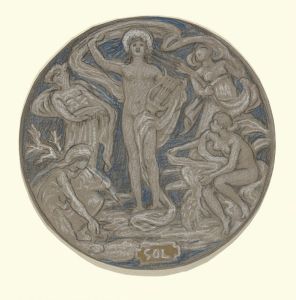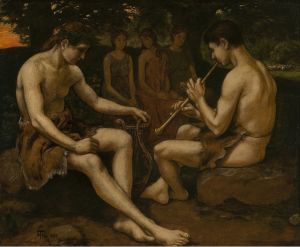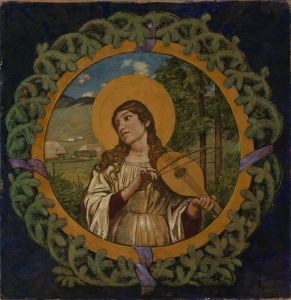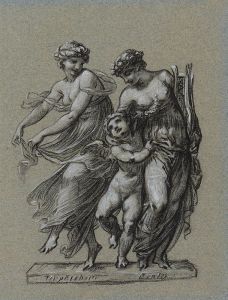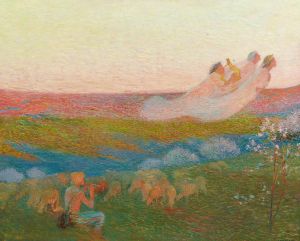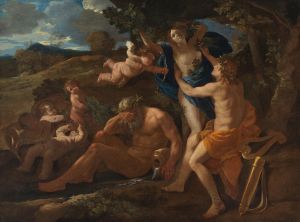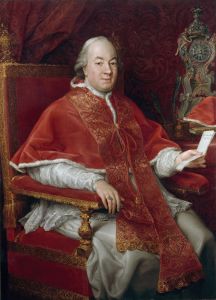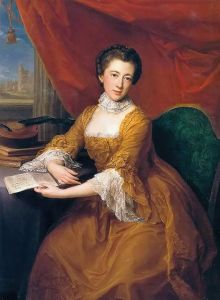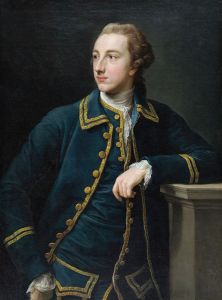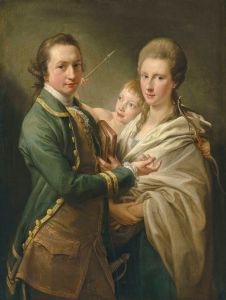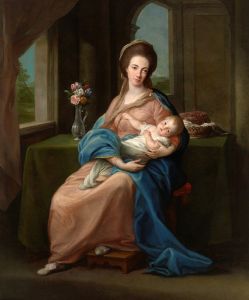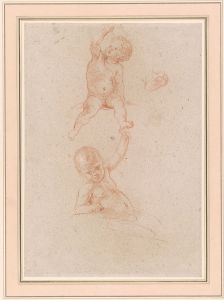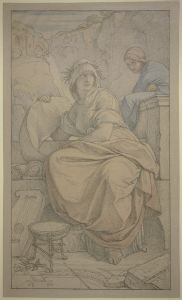
Apollo And Two Muses
A hand-painted replica of Pompeo Batoni’s masterpiece Apollo And Two Muses, meticulously crafted by professional artists to capture the true essence of the original. Each piece is created with museum-quality canvas and rare mineral pigments, carefully painted by experienced artists with delicate brushstrokes and rich, layered colors to perfectly recreate the texture of the original artwork. Unlike machine-printed reproductions, this hand-painted version brings the painting to life, infused with the artist’s emotions and skill in every stroke. Whether for personal collection or home decoration, it instantly elevates the artistic atmosphere of any space.
Pompeo Batoni was an Italian painter of the 18th century, renowned for his portraits and historical paintings. One of his notable works is "Apollo and Two Muses," which exemplifies his skill in combining classical themes with the refined elegance characteristic of the Rococo period.
"Apollo and Two Muses" is a painting that reflects Batoni's deep appreciation for classical mythology and his ability to render these themes with a sense of grace and beauty. The painting depicts Apollo, the Greek god of music, poetry, and the arts, accompanied by two muses. In classical mythology, muses are the inspirational goddesses of literature, science, and the arts, and they were considered the source of knowledge embodied in poetry, lyric songs, and myths.
Batoni's work is known for its vibrant color palette and meticulous attention to detail, both of which are evident in this painting. Apollo is typically portrayed as a youthful and handsome figure, often with a lyre, which is his traditional attribute as the god of music. The muses, though not individually identified in this painting, are usually depicted as beautiful women, each representing different aspects of the arts and sciences.
The composition of "Apollo and Two Muses" is harmonious and balanced, showcasing Batoni's mastery of form and his ability to create a sense of movement and interaction between the figures. The figures are arranged in a way that guides the viewer's eye through the painting, creating a dynamic yet cohesive scene. The use of light and shadow adds depth and dimension, enhancing the overall aesthetic appeal of the work.
Batoni's work was highly sought after during his lifetime, and he became one of the most celebrated portraitists in Rome. His ability to blend the grandeur of historical and mythological subjects with the elegance of portraiture made him a favorite among the European aristocracy and the burgeoning middle class. "Apollo and Two Muses" is a testament to his skill in capturing the essence of classical themes while infusing them with the stylistic elements of his time.
The painting is a fine example of Batoni's ability to convey the ideals of beauty and harmony that were central to the art of the 18th century. It reflects the influence of the classical revival that was prevalent during the period, as artists and patrons looked to the ancient world for inspiration and guidance in their pursuit of artistic excellence.
In summary, "Apollo and Two Muses" by Pompeo Batoni is a work that encapsulates the artist's mastery of classical themes and his ability to render them with elegance and sophistication. The painting remains a significant example of 18th-century art, illustrating the enduring appeal of mythological subjects and the skill of one of the period's most accomplished painters.





